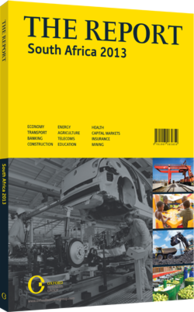OBG talks to Simon Scott, Acting CEO, Lonmin

Interview: Simon Scott
What avenues are there for mines to improve worker conditions and morale?
SIMON SCOTT: Migrant labour is a reality for most of South Africa’s mines, stemming from the days of apartheid when workers were forced to live a long distance from the mines. This legacy still remains, and much of the labour force tends not to originate from, nor consider their primary dwellings, as being in and around the location of the mine.
In turn, the community near the mine tends to not always perceive the workforce as being local. This presents systemic and structural challenges and tensions, and we are ready to partner with other mining companies, the Chamber of Mines and all levels of government to try to address this problem.
Our constitution gives all of our citizens the right to seek work where there is work to be found and this has to be respected. But we, as a nation, have to then find ways to provide suitable accommodation for those workers in the industry who choose to work in one place and have their primary dwelling in another, or encourage them to move their primary dwelling closer to where they work.
Improved safety is another major issue; the way we pay bonuses needs to better align with safety over pure production volumes. Deep-level underground mining is a complex business. And a lot of safety issues arise when you have long work stoppages and the environment is left unattended for long periods.
How critical are employee share ownership plans in building better labour relations?
SCOTT: Operationally, the impact of migrant labour is that it results in a shift system. Assets that could in theory run 365 days a year and 24 hours a day are closed during Christmas and other holidays and run at two-thirds of their potential. We need to engage with labour to find creative ways for an improved return on capital. And employee ownership schemes are one way to do this, as they allow employees to share in the company’s value proposition and align their interests more with those of other shareholders. However, a lot of education around this is necessary. Many workers are financially illiterate and need to understand that share prices swing and do not always generate a positive return – especially after the market reacts to weeks of unsanctioned strikes. Over time, I am optimistic that employee ownership schemes will work. It seems to me that broad-based Black Economic Empowerment schemes, including participation by employees and communities, would be the answer for the future.
Which trends are affecting the outlook for demand for platinum group metals?
SCOTT: South Africa is in a fortunate and envious position, with 75% of the world’s known platinum reserves. In all of our encounters with the government, we as an industry relay the message that while platinum is a uniquely South African industry, customers have alternatives and do not want to be dependent on one supply base.
Globally, AutoCAD technology, due to supply concerns and pricing, is moving towards substituting platinum with palladium. Car manufacturers, also driven by environmental pressures, are looking to source more recycled metal.
Currently, a fairly high proportion of our metal is sold locally through a government-supported drive to encourage beneficiation by having automotive catalyst manufacturers based in the country. The sustainability of this drive has been a concern to some of our customers, notwithstanding our collective efforts in seeking ways to increase the advantages of local beneficiation.
Overall, investors are looking for an environment where they know what the rules on the ground are and where they can make logical decisions based on a fixed set of criteria. Investor confidence is key, particularly in a very cyclical industry like platinum.
You have reached the limit of premium articles you can view for free.
Choose from the options below to purchase print or digital editions of our Reports. You can also purchase a website subscription giving you unlimited access to all of our Reports online for 12 months.
If you have already purchased this Report or have a website subscription, please login to continue.

